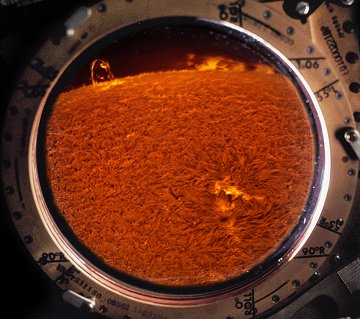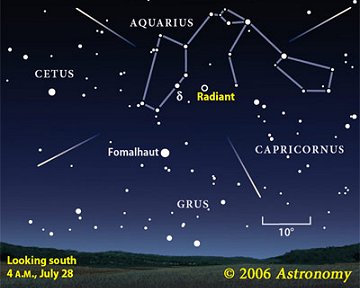 Would you like a call the next time a geomagnetic storm erupts? Sign up for Spaceweather PHONE.
Would you like a call the next time a geomagnetic storm erupts? Sign up for Spaceweather PHONE.
BEWARE THE MARS HOAX: Just when you thought it was safe to read your email, a new Mars Hoax is spreading. The widely circulated message claims "the Red Planet is about to be spectacular. On August 27th, Mars will look as large as the full Moon." Fact: On March 27, 2006, Mars will be on the other side of the solar system, 385 million km from Earth and very dim.
So forget about Mars. If you want to see something truly spectacular on August 27th, look east before dawn for a tight conjunction of Venus and Saturn: sky map. No hoax.
FLIGHT 901: Imagine looking out the window of your spaceship and seeing this:

Image credit: Gary Palmer of Los Angeles.
Photographer Gary Palmer of Los Angeles had just such a vision on July 24th when he photographed sunspot 901. "In my dream, the view was simply breathtaking," he says. To share the spectacle, he combined his photo--"hot off the telescope"--with an older picture of an Apollo 11 bulkhead. Voila! Now boarding flight 901 to the sun....
METEOR SHOWER: The Southern Delta Aquarid meteor shower peaks on July 28th. Go outside before dawn on Friday morning, look south, and you could see a meteor every five minutes or so.

Image credit: Roen Kelly of Astronomy magazine.
No one knows where these meteors come from. They could be remains of a long-dead comet or debris from an asteroid-asteroid collision. Curious fact: There is a debris stream nearly parallel to this one. Earth will pass through it on August 8th, producing the Northern Delta Aquarid meteor shower. It's a mystery, too.

